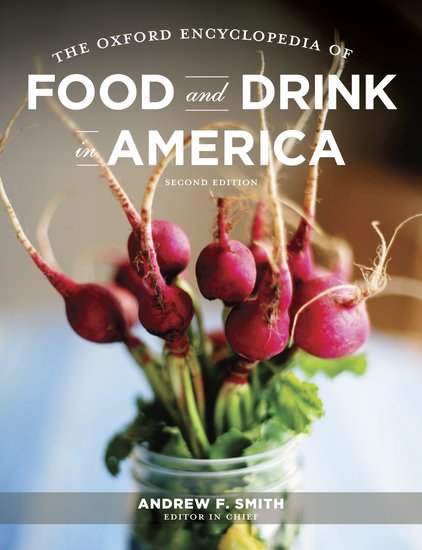With Thanksgiving quickly approaching in the United States, we thought that it would be interesting to highlight ten fun facts on the holiday from the newly released The Oxford Encyclopedia of Food and Drink in America, Second Edition. Additionally, you will find an interview with Editor in Chief Andrew Smith dispelling common myths associated with the origin of Thanksgiving.
1. Of all the hundreds of thanksgiving days observed in New England in the seventeenth century, only one church record in 1636 suggests the possibility of a feast. No further references to thanksgiving feasting over the next 150 years have been located.
2. During the Revolutionary War, the Continental Congress declared 18 December 1777 a day of thanksgiving in honor of the American military victory at Saratoga.
3. The driving force behind making Thanksgiving a national holiday was writer Sarah Josepha Hale. She believed that Thanksgiving Day could pull the United States together while sectional differences, economic self-interest, and slavery were pulling the nation apart. Hale was among the first American women to have a novel published, and she was one of the first authors—male or female—to write a novel that addressed the problem of slavery. It is for her verse that Hale is remembered by many Americans; one of her poems was “Mary Had a Little Lamb.”
4. Perhaps the most famous Thanksgiving poem was written by Lydia Maria Child , whose “The Boy’s Thanksgiving Song” is better known to most Americans by its first line, “Over the river and thro’ the wood.”
5. A few months after the North’s military victories at Gettysburg and Vicksburg in the summer of 1863, Lincoln declared the last Thursday in November a national day of Thanksgiving. Every president since has proclaimed Thanksgiving Day a national holiday. However, the first president to issue a Thanksgiving proclamation was George Washington, who did so at the direction of Congress on 3 October 1789. The few presidents who subsequently issued Thanksgiving proclamations commemorated particular events, such as President James Madison’s proclamation of celebration at the end of the War of 1812. Few presidents issued Thanksgiving proclamations thereafter.
6. Two-course Thanksgiving meals were common in the nineteenth century. The first course consisted of roast turkey, chicken pie, ham, beef, sausage, and duck supplemented with sweet potatoes, yams, succotash, pickles, sweetbreads, turnips, and squash. The second course consisted of pies, tarts, puddings, creams, custards, jellies, floating islands, nuts, and dried fruit. Wine, rum, brandy, eggnog, punch, coffee, and tea were served with the meal.

7. In 1835 William Alcott , a physician, wrote that he was opposed to the feast on moral grounds as well as for medical reasons. He called the Thanksgiving holiday a carnival loaded with luxuries. Alcott had another reason for opposing the Thanksgiving dinner—he had become a vegetarian in 1830 and later was one of the founders of the American Vegetarian Society. Although few Americans paid attention to Alcott or other vegetarians at the time, vegetarian concerns re-emerged at the end of the century.
8. The rapid adoption of the Pilgrim-Thanksgiving myth had less to do with historical fact and more to do with the arrival of hundreds of thousands of immigrants to the United States. Because the immigrants came from many lands, the American public education system attempted to create a common American heritage. One curricular need was to create an easily understood history of America. The Pilgrims were an ideal symbol for America’s beginning, so they became embedded in the nation’s schools, as did the Thanksgiving feast.
9. A Puritan thanksgiving was a solemn religious day celebrated with attendance at church and prayer to God.
10. Although pumpkins are of New World origin, the first recipes for pumpkin pie appeared in British cookbooks. From the earliest records pumpkin and other sweet pies were part of Thanksgiving festivities.


[…] one of ten fun facts about Thanksgiving from Erin at the OUP Blog: 5. A few months after the North’s military victories at Gettysburg and Vicksburg in the summer […]
[…] University Press hopes you had a wonderful Thanksgiving. Following a weekend of food comas and couch potato-ing, here’s a slideshow celebrating the […]